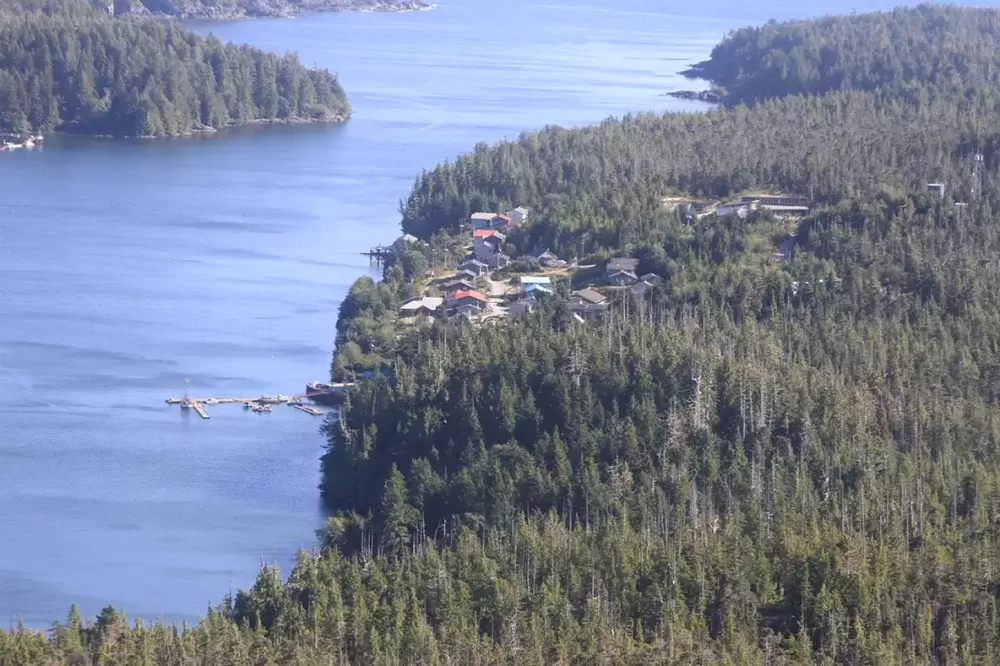A run-of-river hydroelectric project designed to reduce reliance on diesel fuel at Hot Springs Cove remains in hiatus a year after Hesquiaht First Nation had hoped to see it operational.
While some provincial government funds have been earmarked for the $14.7-million project over the past year, they hinge upon whether HFN can obtain federal financial support, said Chief Counsellor Richard Lucas.
With a federal election in full swing, he’s not expecting to have the sought-after funding confirmed in the short term.
A second review of projects for the Clean Energy for Rural and Remote Communities Program (CEERC), administered by Natural Resources Canada, was completed in spring 2019. Hesquiaht’s proposal was not among projects selected for funding in that round.
The 250-kilowatt hydro facility proposed for Ahtaapq Creek would seem to be a perfect fit for remote Hot Springs Cove. CEERC was set up to reduce reliance among rural and remote communities with an emphasis on First Nations. Reducing use of diesel fuel, a greenhouse gas contributing to climate change, is among its main objectives.
Lucas, who has been working on the alternative energy project since he was elected chief councillor four years ago, remains confident that funding can be secured.
“I’ll be optimistic and say that it could be on for this coming budget year,” he said.
Hot Springs Cove is among half a dozen communities along the Island’s west coast that rely on supplies of diesel fuel, barged from Tofino, to run generators for electricity. The only existing backup for warmth in winter is wood heat. Winter weather has delayed supplies for two to three weeks, Lucas said.
The hydro power project would reduce use of diesel by an estimated 75 percent, while enabling major cost savings for the First Nation estimated to range from $500,000 to $750,000 per year.
To date, $1.3 million has been provided by CEERC for construction of an access road along Ahtaapq Creek. That initial part of construction is complete. Design and regulatory permitting were also completed last year, including a boundary adjustment to Maquinna Marine Provincial Park that allows access through the park.
As well, a $500,000 equity grant from B.C.’s First Nations Energy Business Fund was confirmed last summer. More recently, another $500,000 piece was awarded in March through B.C.’s Rural Dividend Fund.
Hesquiaht’s project partner is Nanaimo-based Barkley Project Group, which specializes in renewable energy systems. The company has designed and built a series of small-scale power projects for B.C. First Nations, including Winchie Creek Hydro, Tla-o-qui-aht First Nation’s third hydro project.
Other BPG projects include Little Nitinat River Hydro with Ditidaht First Nations and Sarita River Hydro with Huu-ay-aht First Nations. Canoe Creek, Tla-o-qui-aht’s first hydro facility, has been operational for almost 10 years.
A year ago, BPG and Hesquiaht were hoping for an early start on site preparation to proceed with facility construction this past spring. At that time, project completion was scheduled for some time in 2019.
Hesquiaht First Nation has been making steady progress on other fronts, Lucas said. A six-room lodge at Hot Springs Cove is completed and should be ready to receive guests next spring. As well, a sewer and water replacement project is going ahead in Hot Springs Cove, meaning the 50 or so residents can expect to their streets excavated in the process.








